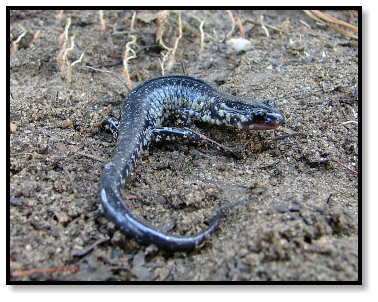

SOUTHEAST
March 2006

1 of 4


SOUTHEAST
March 2006


1 of 4
As the weather finally begins to warm, rising temperatures and restless anticipation stimulate the spring
migration of herpers down the eastern seaboard. Guided by some mysterious force (Mapquest) they converge on
the Southeast, returning annually to renew the cycle of life. (Surely every herper’s been told to get a life, right?)
This year I, too, am part of the wheeled migration, along with my brother Ron and our friend Berkeley. First
stopover is the Lowcountry of South Carolina, where we join a group of local herpers to help them hunt for
Rattlesnakes in a thickly wooded pine forest.
Spend all afternoon searching, but the closest we come to snakes is a Racer that gets away from Ron. By the
end of the day we find ourselves in a stand of spindly pines that had been cleared by fire, so we spread out to cover
more ground on the open forest floor.
Sweeping the dry, brown needles around a small, charred stump, one of our companions is surprised to
discover something hidden beneath the matted pine straw.
The snake lis perfectly still until we pull back its cover, at which point the Canebrake makes his objections
perfectly clear. Eventually it settles back down, apparently convinced that, once again, he can no longer be seen.
Next day is spent upland in sand hills habitat.
It’s still quite cool, so we’re surprised when this juvenile Coachwhip, an extreme hot-weather snake, turns up
so early in the season.
Find a pair of Slimies under cover by the edge of the woods . . .
. . . and this Red Salamander in a nearby stream. The southern variety is much duller than its northern cousin,
but it’s a lifer for me, so I’m pleased to see one.
Fence lizards are very common in the sand hills, but this one found by Berkeley is uncommonly colorful.
Not so common is the Crowned Snake, a small, secretive serpent that feeds on insects and arachnids. It is
another lifer for me and Ron.
Southern Toads are plentiful, but this one is particularly uncolorful (though sort of dramatic, in that troll-
gargoyle-mutant kind of way). Ground Skinks, too, are abundant in the sandy South Carolina habitat.
Down near the base of the sand hill is a small, clear stream where I get my first chance to see a Queen Snake.
Although quite common in many places throughout the South, for some reason I’ve never come across one until
now. So although we don’t find much this day, the tally includes three lifers for me, and I leave our first stopover
with the pleasure that comes from small, satisfying discoveries.
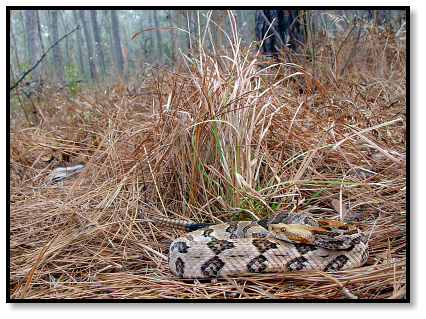
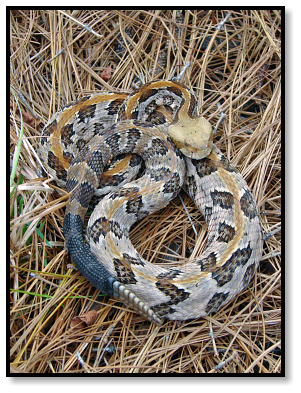
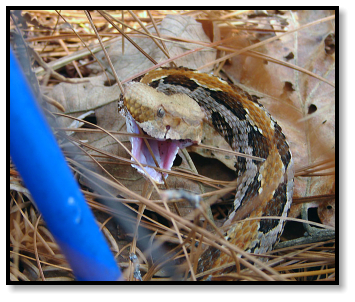
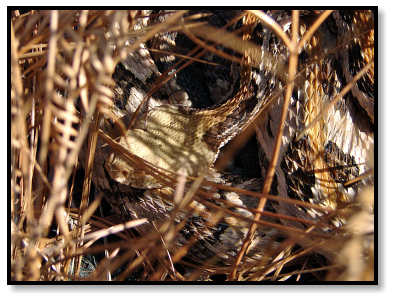
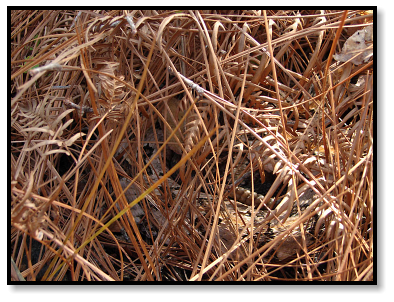
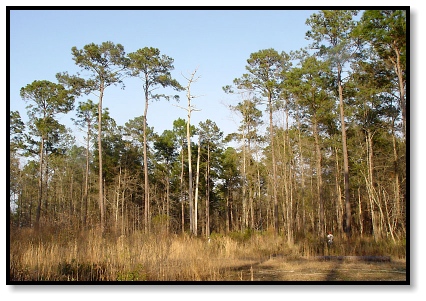
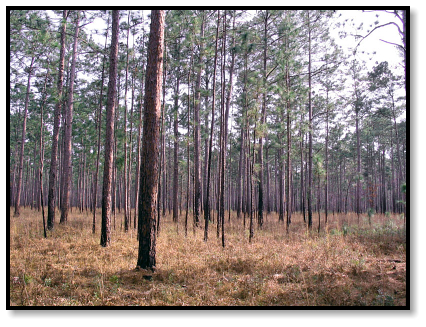
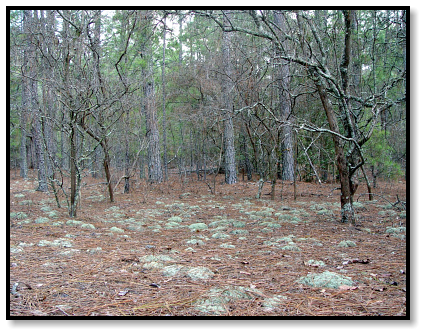
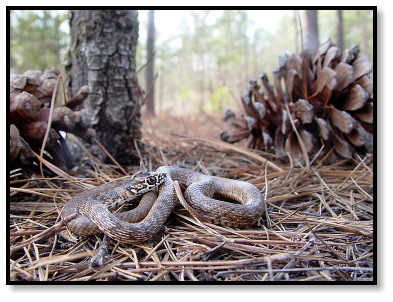
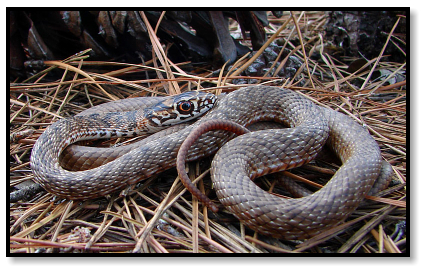
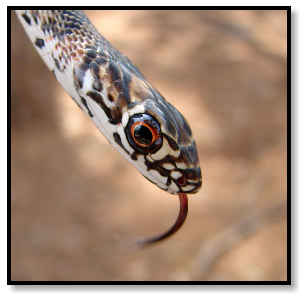
Canebrake Rattlesnake
Crotalus horridus
Southern coastal plain form of Timber Rattlesnake

Eastern Coachwhip
Masticophis flagellum flagellum
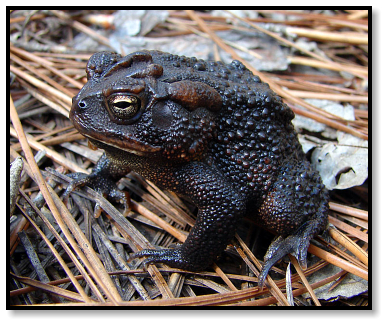
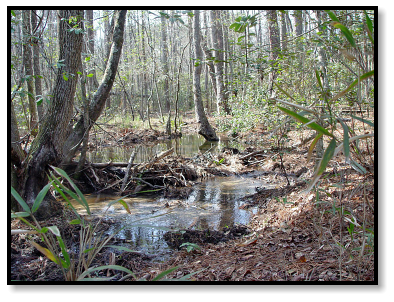
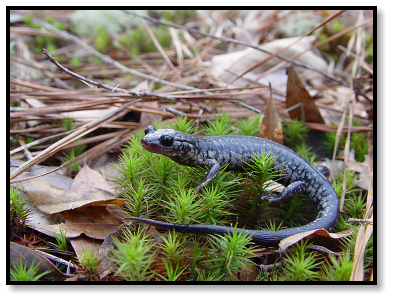
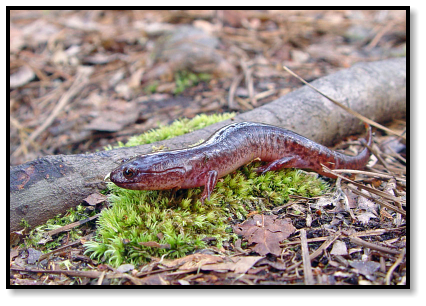
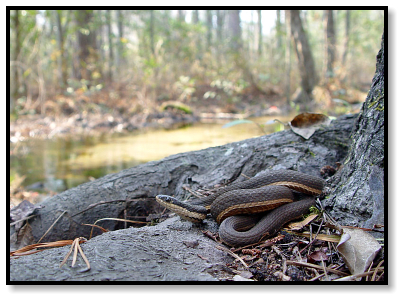
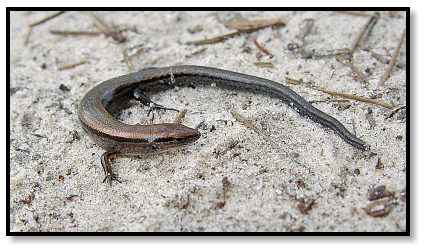
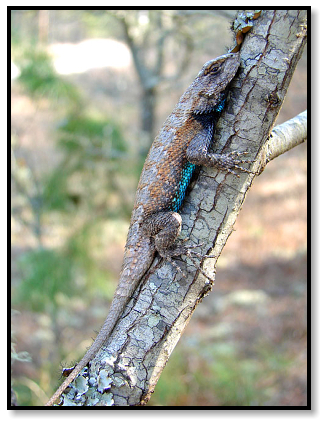
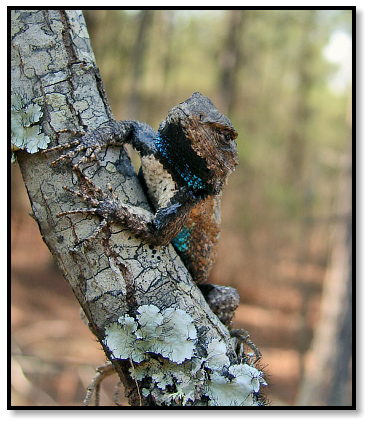
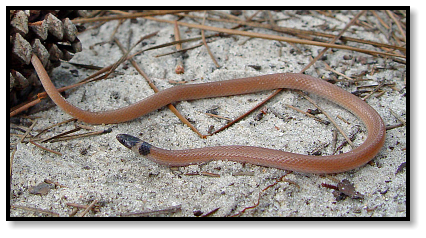
Slimy Salamander
Plethedon glutinosus
Southern Red Salamander
Pseudotriton ruber vioscai
Eastern Fence Lizard
Sceloporus undulatus
Southeastern Crowned Snake
Tantilla coronata
Ground Skink
Scincella lateralis
Southern Toad
Bufo terrestrius
Queen Snake
Regina septemvittata
